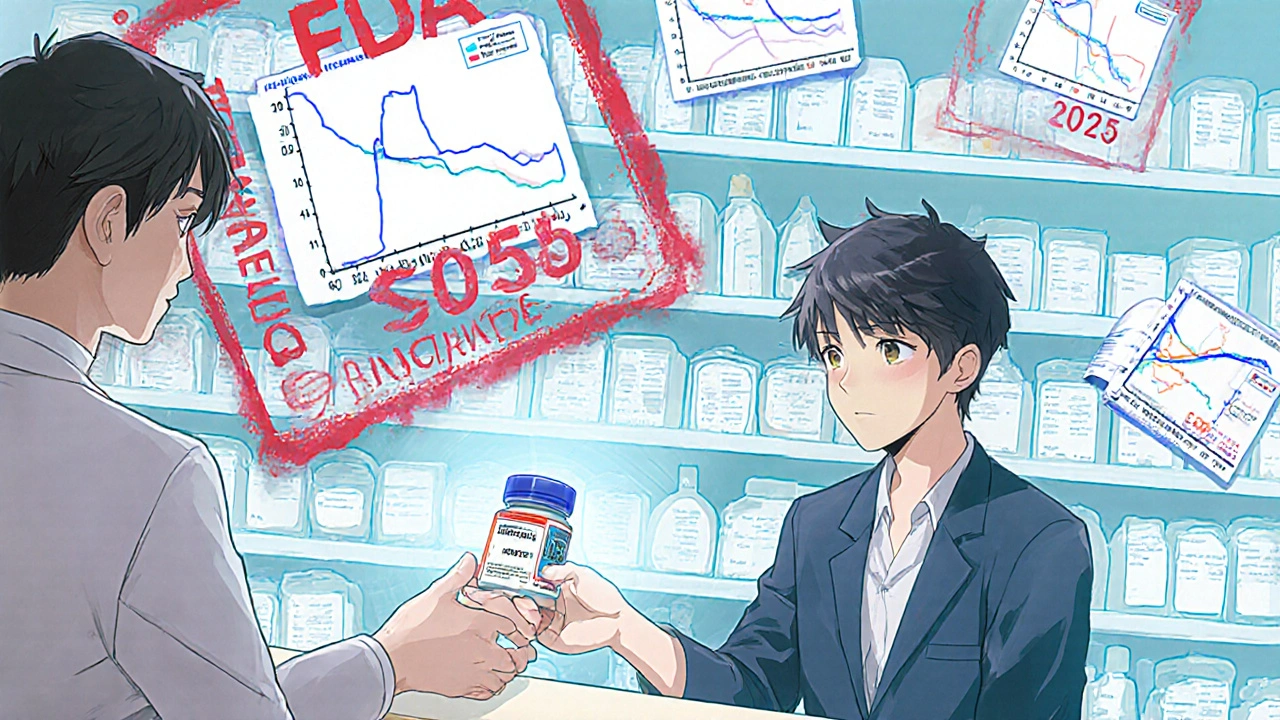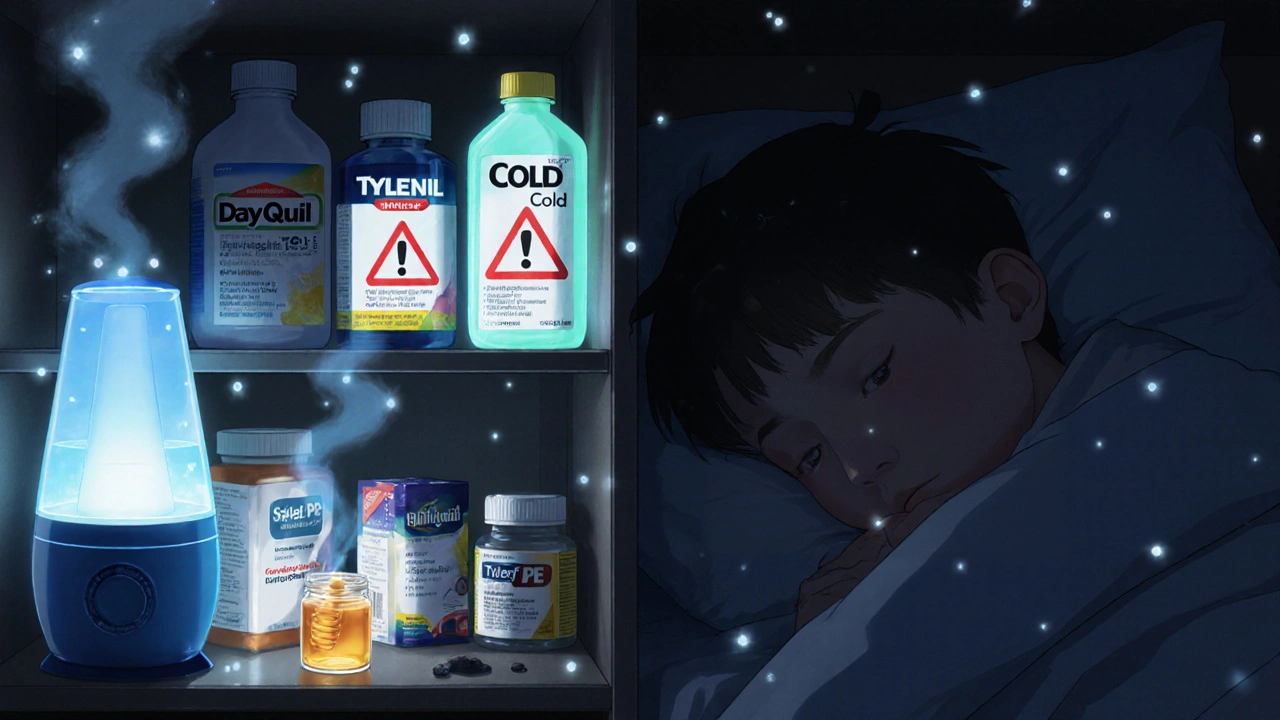Every winter, millions of people reach for OTC cough and cold medicines hoping for quick relief. But here’s the hard truth: many of the most popular ingredients in these products don’t work-and some can be dangerous, especially for kids. If you’ve ever bought a bottle of DayQuil or Sudafed PE, only to feel just as stuffy the next day, you’re not alone. The science is clear: the active ingredients in most over-the-counter cold remedies have been overhyped for decades.
Why Your Cold Medicine Might Be Wasting Your Money
Oral phenylephrine is the most common decongestant in OTC cold products today. You’ll find it in Tylenol Cold, Vicks DayQuil, and countless store brands. It’s labeled as a nasal decongestant, promising to clear your sinuses. But according to the U.S. Food and Drug Administration (FDA), it doesn’t. In September 2023, the FDA’s advisory panel reviewed decades of data and concluded that a 10mg dose of oral phenylephrine-exactly what’s in every bottle-is no more effective than a sugar pill at reducing nasal congestion. The evidence isn’t new. A 2007 meta-analysis from the University of Minnesota found that even at double the dose (25mg), phenylephrine only reduced congestion by 27.6%. That’s not enough to make someone feel better. And here’s the kicker: no study has shown patients actually feel less stuffed up after taking it. Yet, it’s still in nearly every cold medicine on the shelf. Why? Because it’s cheap to make, easy to include in formulations, and doesn’t require a prescription like pseudoephedrine-which actually works. Pseudoephedrine, found in Sudafed, is a proven decongestant. But you can’t just grab it off the shelf. You need to show ID and ask a pharmacist. That’s because it’s used to make methamphetamine. The industry swapped it out for phenylephrine not because it’s better, but because it’s easier to sell. And now, the FDA is finally stepping in. Their proposed rule would remove oral phenylephrine from the list of approved OTC ingredients. If finalized, manufacturers will have to reformulate products by late 2025.What About Cough Syrups? Dextromethorphan and Guaifenesin
Dextromethorphan (DM) is the go-to cough suppressant in products like Robitussin and Mucinex DM. It’s supposed to quiet your cough. But multiple reviews, including one from 2014 that looked at 29 clinical trials, found no strong evidence it works better than a placebo for acute coughs in adults or kids. Guaifenesin, the expectorant meant to thin mucus, has even less proof. A 2023 report from the University of Minnesota Pharmacy said the evidence for both DM and guaifenesin is “poor” and doesn’t support their use. That doesn’t mean all cough medicine is useless. Honey, for example, has been shown in multiple studies to reduce nighttime coughing in children over 12 months old. One study found that giving 2.5 mL (half a teaspoon) of honey before bed was as effective as dextromethorphan-and safer. And honey is already in your kitchen. No pharmacy trip needed. For adults, a warm drink with honey and lemon might be the most effective “medicine” you have. It soothes the throat, keeps you hydrated, and gives your body the rest it needs to heal. That’s something no pill can replicate.Why Kids Are at the Highest Risk
Children under 6 shouldn’t be given OTC cough and cold medicines at all. The American Academy of Pediatrics has said this since 2007. Why? Because the risks far outweigh any unproven benefits. Between 2000 and 2007, 20 children in the U.S. died from accidental overdoses of these products. Thirteen of those kids were under two. Even if you follow the dosing instructions, it’s easy to accidentally give too much. Many cold medicines contain the same active ingredients-like acetaminophen or dextromethorphan. If you give a child Tylenol Cold and then a separate cough syrup, you’re doubling up. That’s how liver damage and seizures happen. Parents are catching on. A 2023 survey by What to Expect found that 73% of parents have stopped giving OTC cold medicine to kids under 6. That’s a good sign. But many still give it to kids aged 6 to 12, thinking it’s “safer.” It’s not. There’s still no solid proof these drugs help kids recover faster. And side effects like drowsiness, irritability, and rapid heart rate are common. The safest options for kids? Saline nose drops, a bulb syringe to clear mucus, a cool-mist humidifier, and plenty of fluids. For coughs in kids over 12 months, honey is the only OTC alternative with proven results. And it’s not just safe-it’s effective.
The Hidden Dangers: Drug Interactions and Overdoses
OTC cold medicines aren’t harmless just because they’re available without a prescription. Many contain ingredients that can interact dangerously with other drugs. For example, decongestants like phenylephrine or pseudoephedrine can spike blood pressure. If you’re taking an MAOI antidepressant (like phenelzine or tranylcypromine), mixing them can cause a life-threatening surge in blood pressure, irregular heartbeat, or even stroke. Even common pain relievers can be risky. Many cold products include acetaminophen. If you’re also taking Tylenol for a headache, you could hit the 4,000mg daily limit without realizing it. That’s enough to cause serious liver damage. In fact, acetaminophen overdose is the leading cause of acute liver failure in the U.S. Always read the Drug Facts label. Look for active ingredients, not brand names. If two products have the same ingredient listed-like “dextromethorphan” or “phenylephrine”-don’t take them together. And if you’re on any prescription meds, check with a pharmacist before using OTC cold products.What Actually Works? Evidence-Based Alternatives
You don’t need a pharmacy full of bottles to feel better. Here’s what science supports:- Honey (for kids over 12 months and adults): 2.5 mL before bed reduces cough frequency and severity. Better than dextromethorphan.
- Saline nasal spray or drops: Clears mucus without drugs. Safe for newborns.
- Bulb syringe: Helps babies breathe better when their nose is blocked.
- Humidified air: A cool-mist humidifier adds moisture to dry winter air, easing congestion and coughing.
- Rest and fluids: Water, broth, tea. Hydration helps thin mucus and keeps your throat from drying out.
- Nasal decongestant sprays (oxymetazoline): These work locally, not systemically. Use for no more than 3 days to avoid rebound congestion.

What’s Changing in 2025 and Beyond
The OTC cold medicine market is worth over $6 billion in the U.S. But it’s on shaky ground. With phenylephrine likely being pulled from shelves by late 2025, companies will have to reformulate. Some may switch back to pseudoephedrine and make it available behind the counter. Others might start using safer, proven alternatives like nasal sprays or even plant-based ingredients. Consumer behavior is already shifting. Amazon reviews for phenylephrine-based products have dropped from 4.1 stars in 2020 to 3.2 stars in 2023. People are calling them “wasted money.” Meanwhile, sales of honey-based cough remedies and saline nasal sprays are growing at over 12% per year. The FDA’s move isn’t just about removing an ineffective ingredient. It’s a signal that OTC medicine needs to be held to the same standard as prescription drugs: proof of safety and effectiveness. If you’re buying something that doesn’t work, you’re not just wasting money-you’re risking your health.What to Do Today
If you have a cold:- Check your medicine cabinet. If it contains phenylephrine, dextromethorphan, or guaifenesin, you’re not getting what you think you are.
- For adults: Try honey, steam, fluids, and rest. Skip the syrup.
- For kids over 12 months: Honey before bed. Saline drops. Humidifier.
- For babies under 12 months: Only saline drops and suction. No honey. No medicine.
- Always read labels. Avoid combining products with the same active ingredient.
- If symptoms last more than 10 days, or you have a fever over 38.5°C, see a doctor.



Nikhil Chaurasia
November 25, 2025 AT 11:02Man, I remember buying that Vicks DayQuil last winter and thinking, 'Why am I still coughing?' Turns out, I was just paying for sugar water with a fancy label. India's got its own herbal remedies like tulsi and ginger tea-works better than anything in the pharmacy aisle, and costs like 50 cents. Why do we keep falling for this?
Also, phenylephrine? More like 'phenyl-who?'
Holly Schumacher
November 26, 2025 AT 10:13Let me be very clear: the FDA’s 2023 decision is long overdue. Phenylephrine has been a corporate scam since 2006, disguised as medicine. The fact that it’s still on shelves is a failure of regulatory oversight-and a testament to how much money pharmaceutical companies will make off placebo pills. And don’t get me started on dextromethorphan: it’s not a cough suppressant, it’s a dissociative hallucinogen at higher doses. Kids are getting high on cough syrup, and parents are still buying it because the label says ‘for cough relief.’ This isn’t medicine. It’s a public health farce.
Also, honey? Yes. Honey is the only thing that’s ever worked for my daughter’s cough. And no, I’m not ‘alternative.’ I’m just not stupid.
Michael Fitzpatrick
November 27, 2025 AT 16:14It’s wild how much we’ve been sold on the idea that medicine has to come in a bottle with a label. I used to be the guy who stocked up on every cold product in sight-DayQuil, NyQuil, Mucinex, Robitussin, the whole nine yards. Then I got sick last year, didn’t take a single pill, and just did honey, steam, and sleep. I felt better faster, didn’t feel groggy, didn’t have a weird aftertaste, and didn’t accidentally take two doses because I forgot which bottle had what.
And honestly? My body felt like it was actually healing, not just being chemically numbed. I think we’ve forgotten that rest isn’t laziness-it’s the original medicine. The fact that we need a 2,000-word article to remind us of that says something about our culture.
Also, I bought a humidifier on Amazon. Best $30 I’ve spent in years.
Shawn Daughhetee
November 28, 2025 AT 13:03so i just threw out my whole medicine cabinet last week after reading this
no more dayquil no more mucinex no more whatever that stuff is with phenylephrine
honey for the kid and just water for me
turns out i dont need a pharmacy to get better
also my nose stopped being stuffy faster
who knew
Justin Daniel
November 29, 2025 AT 12:05Love this breakdown. Honestly, the fact that we still have a $6 billion industry built on placebo pills says more about marketing than medicine.
And I love that honey’s the MVP here. It’s not just effective-it’s accessible, safe, and doesn’t require a trip to the store. My grandma used to give me honey and lemon before bed. She didn’t know the science, but she knew what worked. Sometimes wisdom doesn’t need a clinical trial.
Also, props to the parents who’ve stopped giving OTC meds to kids under 6. That’s real progress.
Let’s hope the 2025 reformulation isn’t just swapping one useless ingredient for another. Maybe next up: banning ‘natural flavor’ that’s just sugar and dye.
Melvina Zelee
November 30, 2025 AT 15:27okay but why is it so hard to believe that a spoon of honey is better than a bottle of syrup? like we’ve been conditioned to think medicine = pill = expensive = better
but its like saying a glass of water is less real than a fancy bottled electrolyte drink
also i just realized my kid has been using saline drops since she was 3 months and shes never had a bad cold
the real miracle cure is patience and not panicking
and maybe not trusting a label that says 'clinically proven' when its really just 'corporate proven'
ann smith
December 2, 2025 AT 02:39This is such an important post. 🙏
Thank you for sharing the science clearly and without fear. I’ve been telling my friends for years: skip the syrup. Honey, steam, rest. That’s it. I even started keeping a little jar of honey by my bedside. My kids now ask for it naturally. No coercion. Just trust in what works.
And yes-reading labels is non-negotiable. I almost gave my toddler two meds with acetaminophen last month. Thank goodness I checked.
Let’s keep pushing for transparency. The future of OTC meds needs to be honest, not profitable.
❤️
Julie Pulvino
December 3, 2025 AT 05:05Just wanted to add: I work in a pharmacy, and I see this every day. Parents come in asking for something ‘stronger’ for their 4-year-old’s cough. I hand them saline drops and a humidifier recommendation. They look skeptical. Then they come back a week later saying, ‘You were right. She slept through the night.’
It’s not glamorous. It’s not a pill. But it works. And honestly? That’s the most satisfying part of my job.
Also, I’ve started keeping a little honey sample pack behind the counter. Free for anyone asking. People cry. It’s weird. But good weird.
Patrick Marsh
December 4, 2025 AT 18:52Phenylephrine: ineffective.
Dextromethorphan: unproven.
Guaifenesin: barely there.
Honey: proven.
Saline: safe.
Rest: essential.
Read labels.
Don’t mix.
Stop wasting money.
Trust science.
Simple.